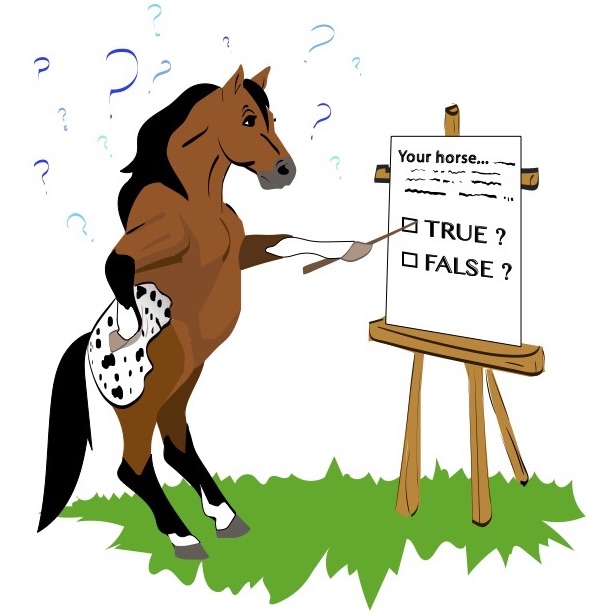
1. True or false: Baby shampoo is NOT the best choice for bathing your horse.
T / F
2. True or false: Frequent shampoo baths will help to keep your horse’s skin clean and healthy.
T / F
3. The best way to save money on shampoo for your horse is to…
A) buy inexpensive human products.
B) use a sponge-bathing technique.
C) practice “automatic dilution.”
4. True or false: Too-frequent bathing can negatively affect your horse’s hooves.
T / F
HOW’D YOU DO? (Answers below.)
Selection of 4 shampoos plus equine vacuum:
(1) Mane ‘n Tail
(2) Farnam Vetrolin
(3) EQyss
(4) Cowboy MagicProducts we feature have been selected by our editorial staff. If you make a purchase using the links included, we may earn a commission. For more information click here.
1. T is correct. Avoid baby shampoos. They’re typically less acidic than other shampoos designed for adults (or horses), and so aren’t the best choice for your horse’s skin. A better bet is a shampoo formulated for horses, with a neutral to slightly acidic pH.
2. F is correct. Although some situations (caked-on mud, for example) call for bathing, too-frequent sudsy baths can strip the natural oils from your horse’s coat, leaving his skin dry and his haircoat dull. Save baths for showtime or other special occasions, opting for frequent applications of elbow grease instead to keep your horse clean. (Regular currying and brushing stimulates the skin while cleaning the coat. A vacuuming follow-up is an extra boost to dirt removal.)
3. C is correct. It’s far too easy to overuse shampoo products. Automatic dilution means filling a used liquid-dish-soap squeeze bottle one-third full with your pricey shampoo, topping it off with plain water, and shaking well to mix. Then use that when you bathe your horse; you’ll get the job done well while economizing on the product.
4. T is correct. The hoof wall is a bit like wood: It absorbs moisture quickly, but it also dries out quickly. In situations where your horse’s feet are frequently getting wet and then drying out again, his hooves can become dry and brittle—think of it as “dishpan hands,” only of the feet.
[LEARN MORE about keeping your horse’s skin healthy.]
Hey! Not already receiving H&R’s fun and informative newsletter? Sign up right now for The Ride. It’s free!






